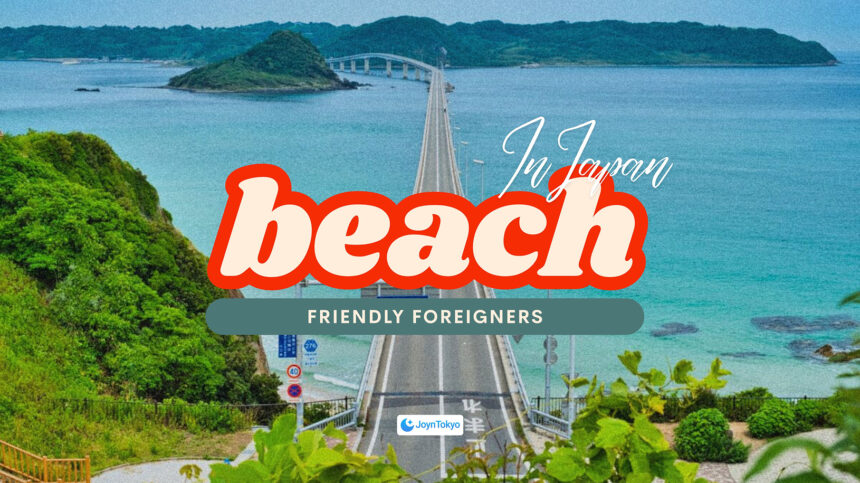Summer in Japan can be utterly brutal, but there is always saltwater relief: and believe it or not, it is rarely far from the capital! Whether you have a spare afternoon, or a long weekend, the country’s railways, ferries and low-cost flights make it possible to trade neon for turquoise in just a few hours!
A Snapshot for Quick Planners
Before you read on, match your schedule to a shoreline.
Under 90 minutes from Tokyo Station
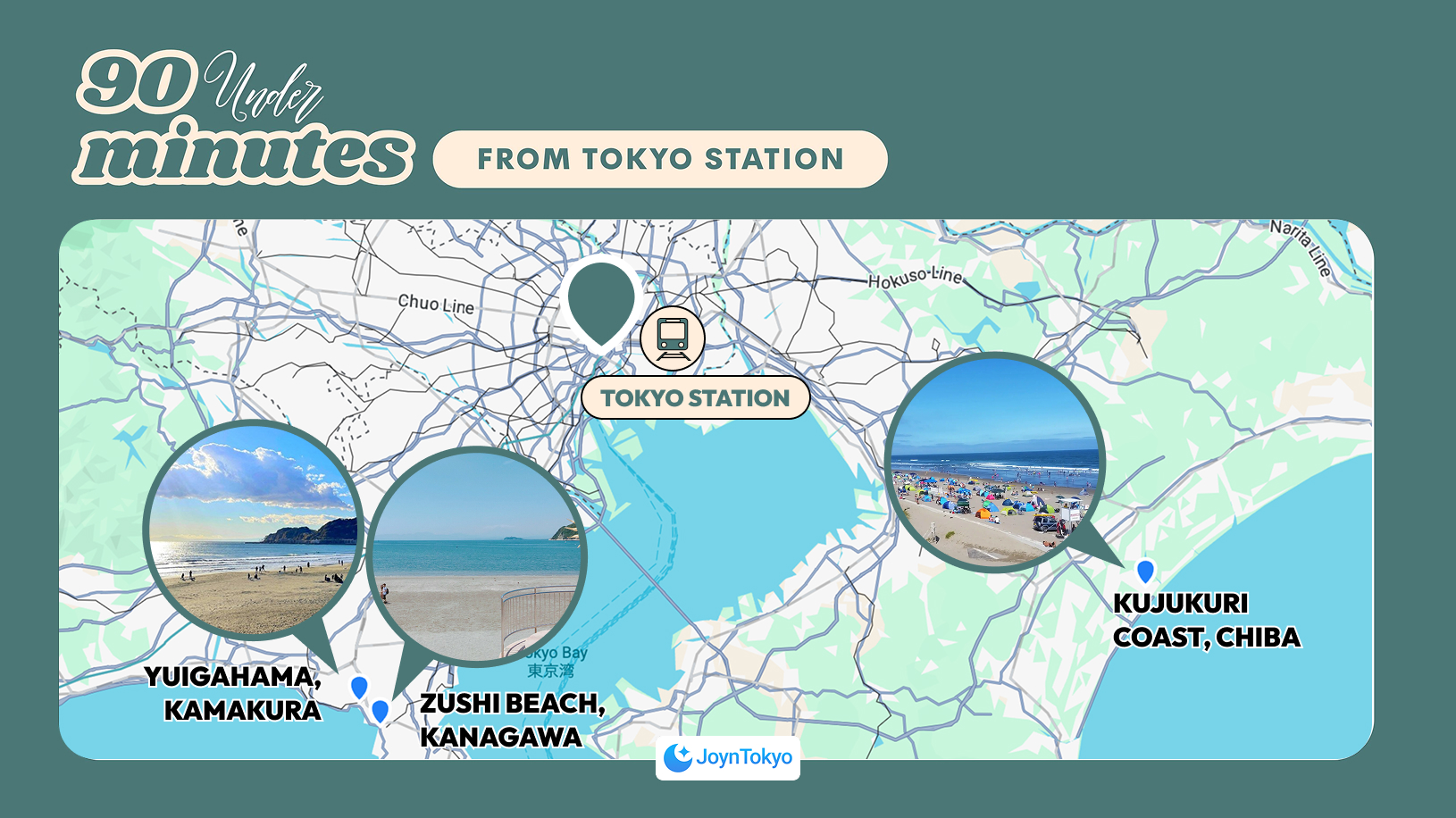
- Zushi Beach, Kanagawa – Calm, Blue-Flag water, with more than 30 beach houses (JR Yokosuka Line, 60 min).
- Yuigahama, Kamakura – Mellow surf and post-swim temple strolls (JR Line, followed by the Enoden line, 70 min).
- Kujukuri Coast, Chiba – Sixty kilometres of consistent waves (90 min by car).
Two to Three Hours
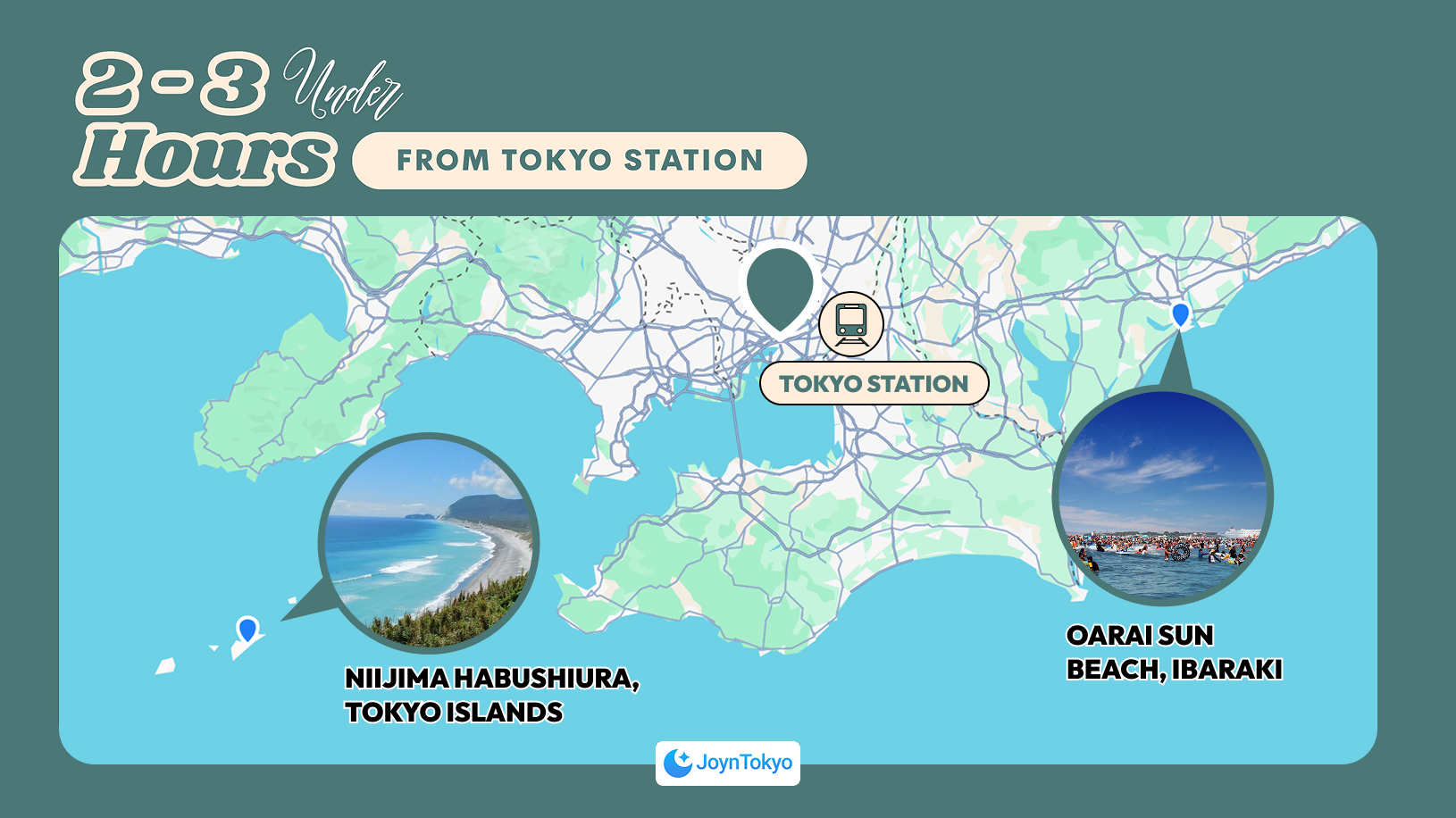
- Oarai Sun Beach, Ibaraki – Wheelchair-friendly boardwalks, with ample parking.
- Niijima Habushiura, Tokyo Islands – 6.5km of powder for surfers (jet foil 2½–3½ hrs).
Three Hours or More
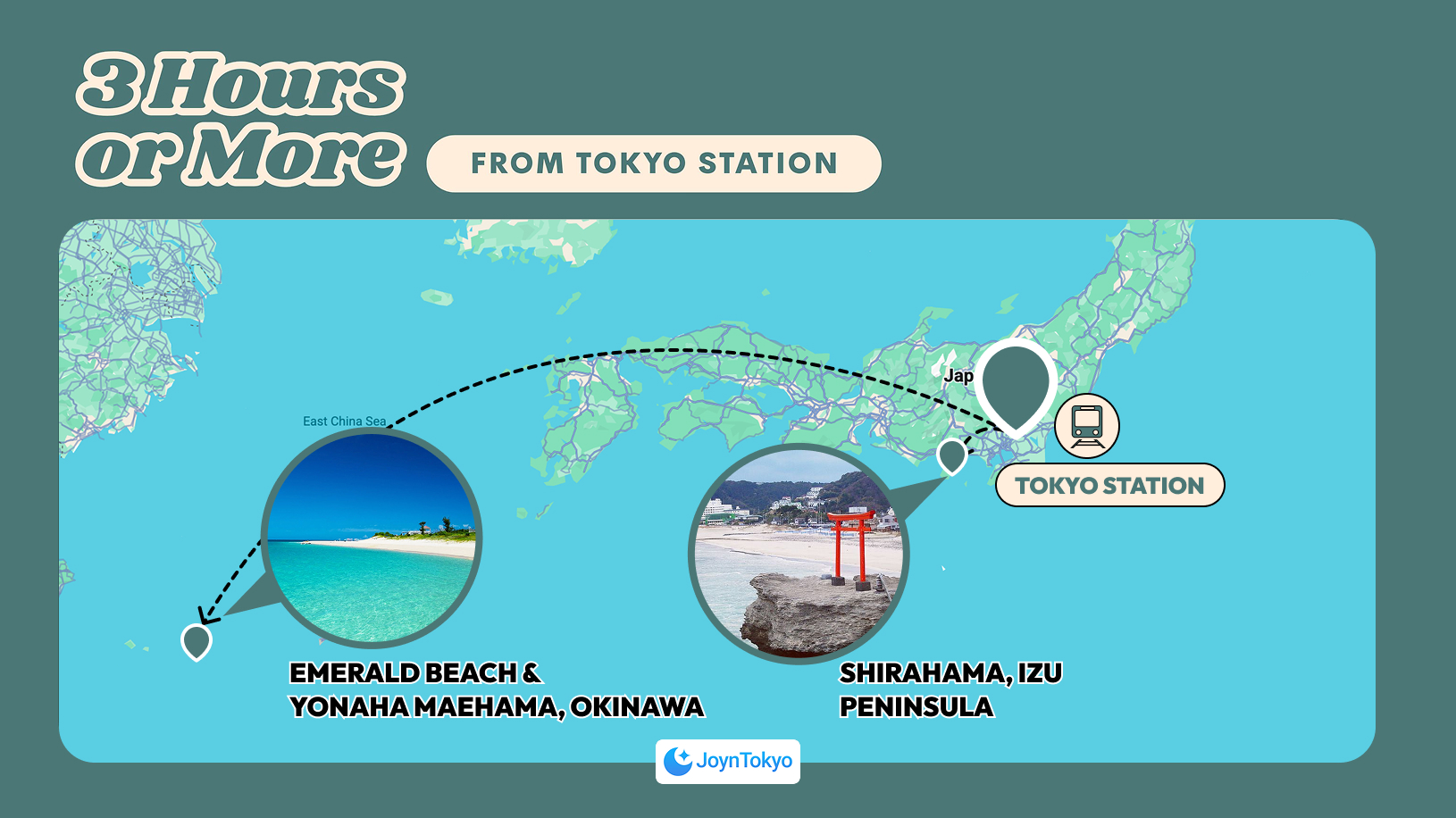
- Shirahama, Izu Peninsula – Caribbean-blue shallows framed by volcanic cliffs.
- Emerald Beach and Yonaha Maehama, Okinawa – Coral-ringed lagoons worth the flight.
How Japan’s Beach Culture Works
Japan officially “opens” its beaches (海開き umi-biraki) only after lifeguards, showers and jellyfish nets are in place: usually early July on Honshu, April in Okinawa. Swimming outside the season is legal but un-patrolled, so be careful to weigh your freedom against your safety. Tattoos may require a rash-vest, rubbish must be carried home, and drunken behaviour draws police attention. Rip-current flags follow a traffic-light system: green for go, yellow for caution, red for stay on the sand.
Day-Trip Escapes
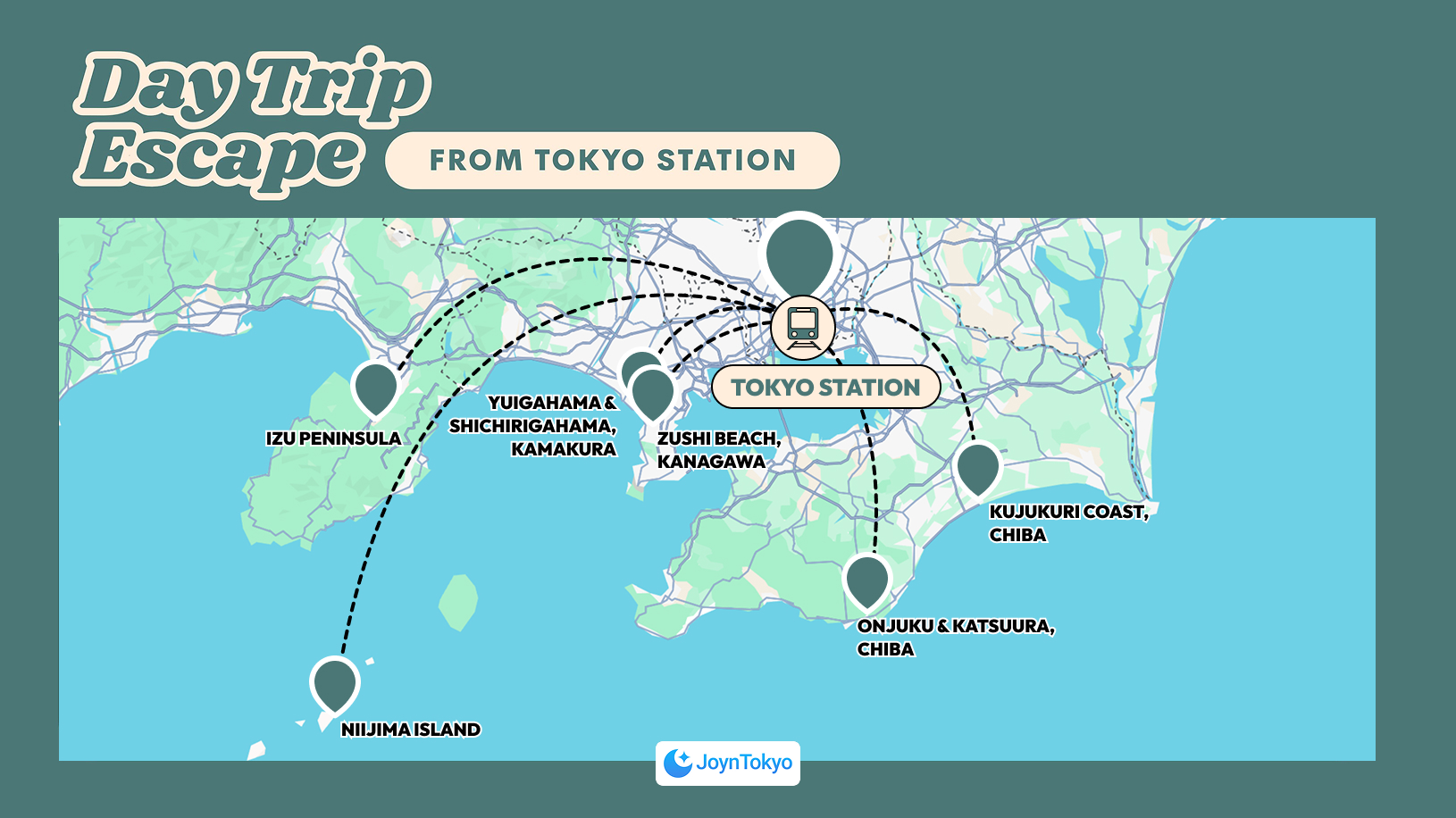
A single Suica swipe can deliver you from your office to the ocean in time for a sunset dip.
Zushi Beach, Kanagawa
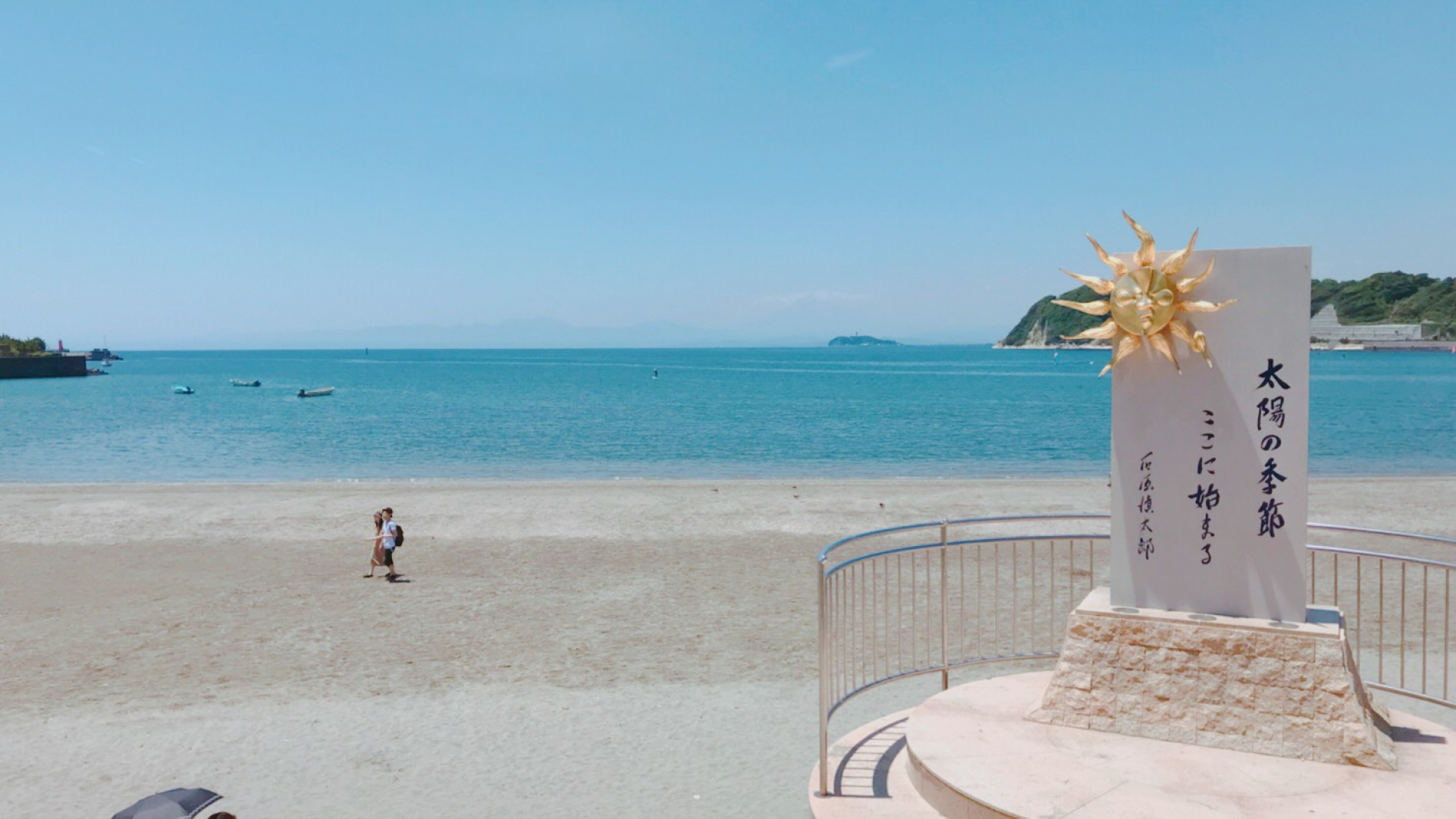
Just 60 minutes away from Tokyo Station, Zushi’s half-mile arc offers paddle-boards, child-friendly shallows and a floating aqua-park. Its Blue-Flag certification guarantees clean water, while beach houses serve vegan rice bowls beside mojitos.
Yuigahama and Shichirigahama, Kamakura
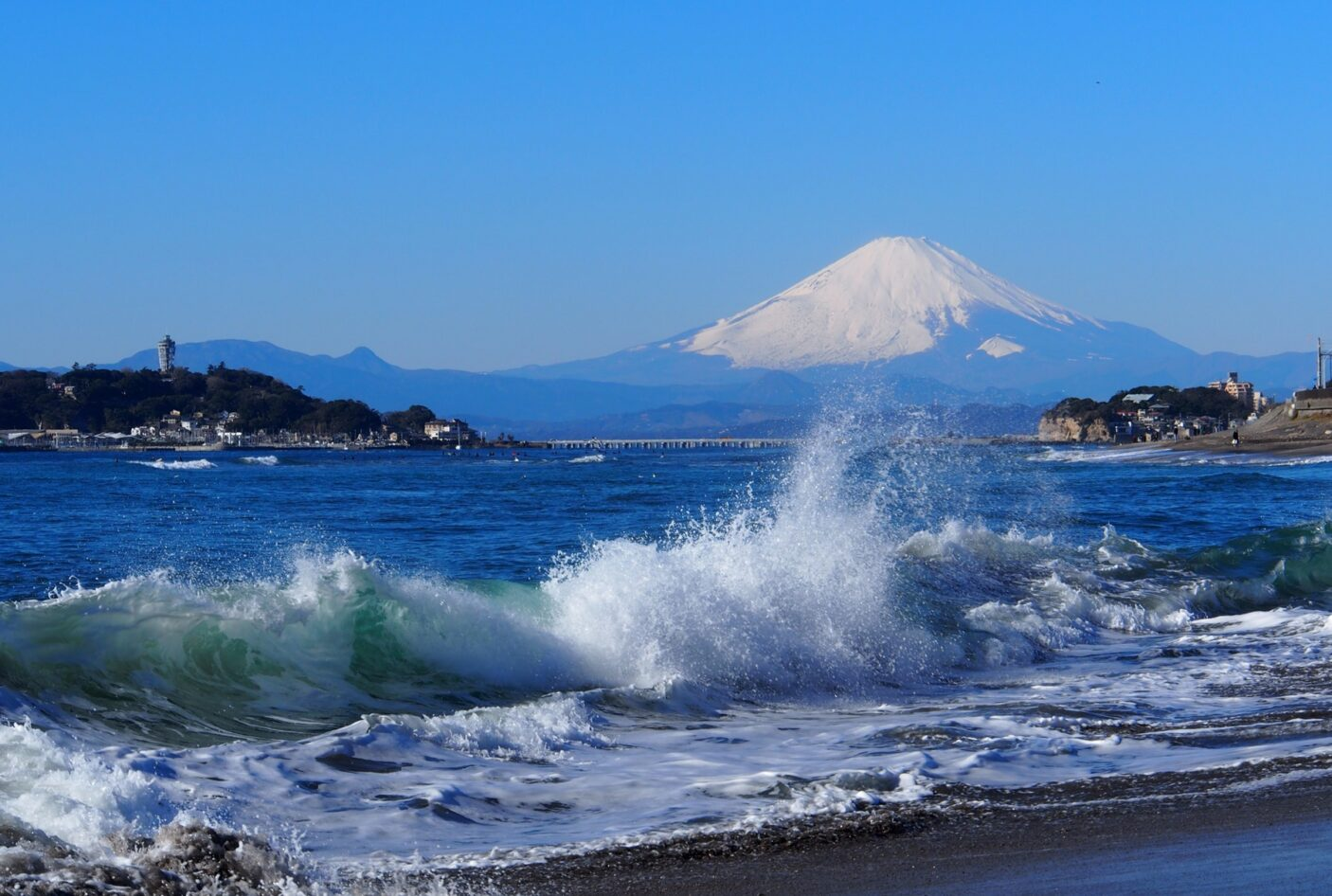
Hop off the Enoden tram after touring shrines and you’ll find surf schools, locker rentals and sunset cafés. Summer weekends feature small fireworks that illuminate Mount Fuji’s silhouette.
Kujukuri Coast, Chiba
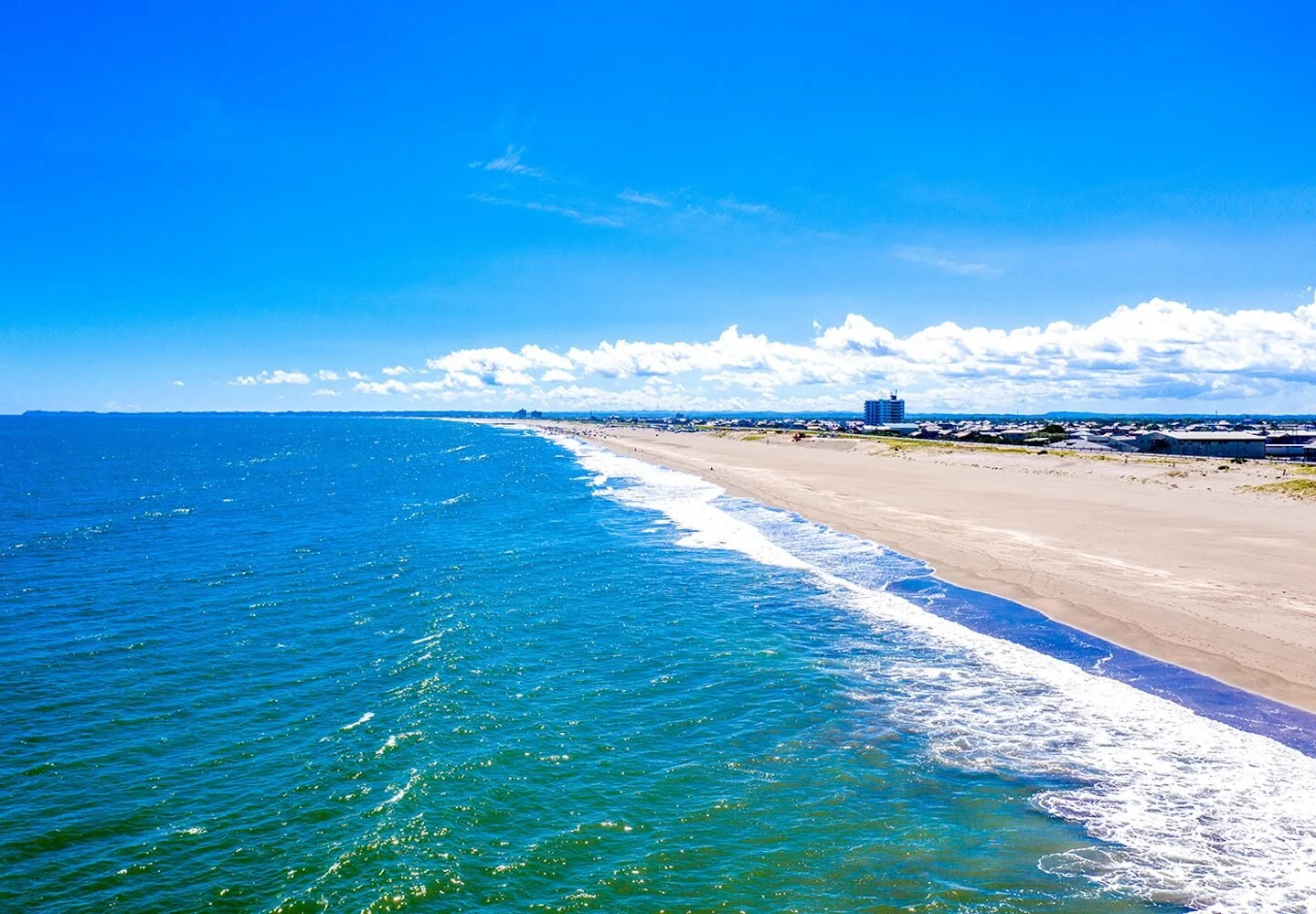
Kanto’s surfing kingdom spreads for 60km; Olympic-tested Ichinomiya delivers consistent breaks, while quieter stretches are more welcoming to beginners. Early-morning toll roads whisk drivers from central Tokyo in under 90 minutes.Weekend Adventures
Shirahama, Izu Peninsula

Express trains skim tea-terraced hills before revealing white sand and snorkel-ready reefs. Local buses circulate between the beach, cliff-top onsen and seafood stalls.
Onjuku & Katsuura, Chiba
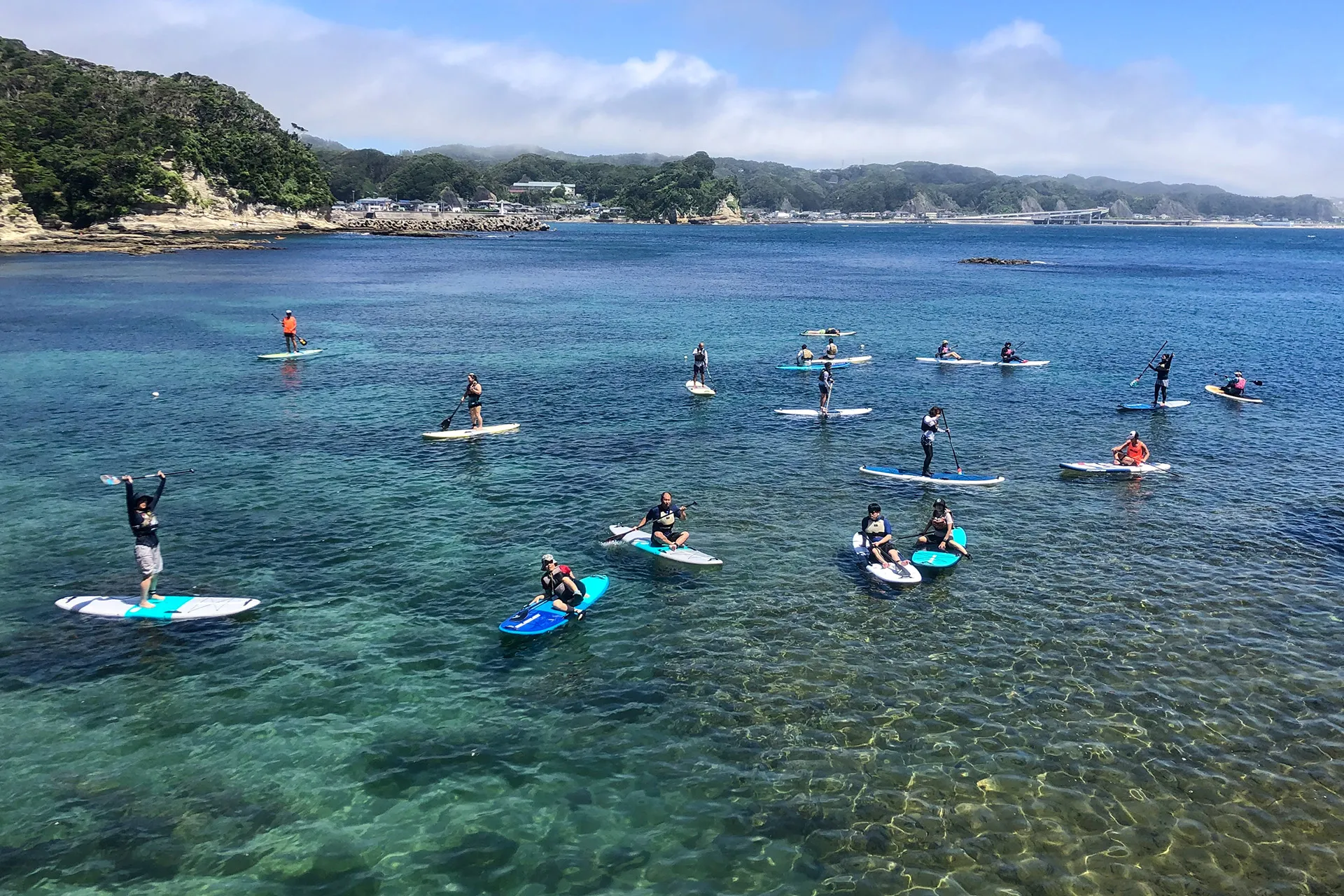
Softer waves than Kujukuri, and with a fishing-town charm. Minshuku guesthouses often bundle rooms with spiny-lobster dinners.
Niijima Island, Tokyo Prefecture
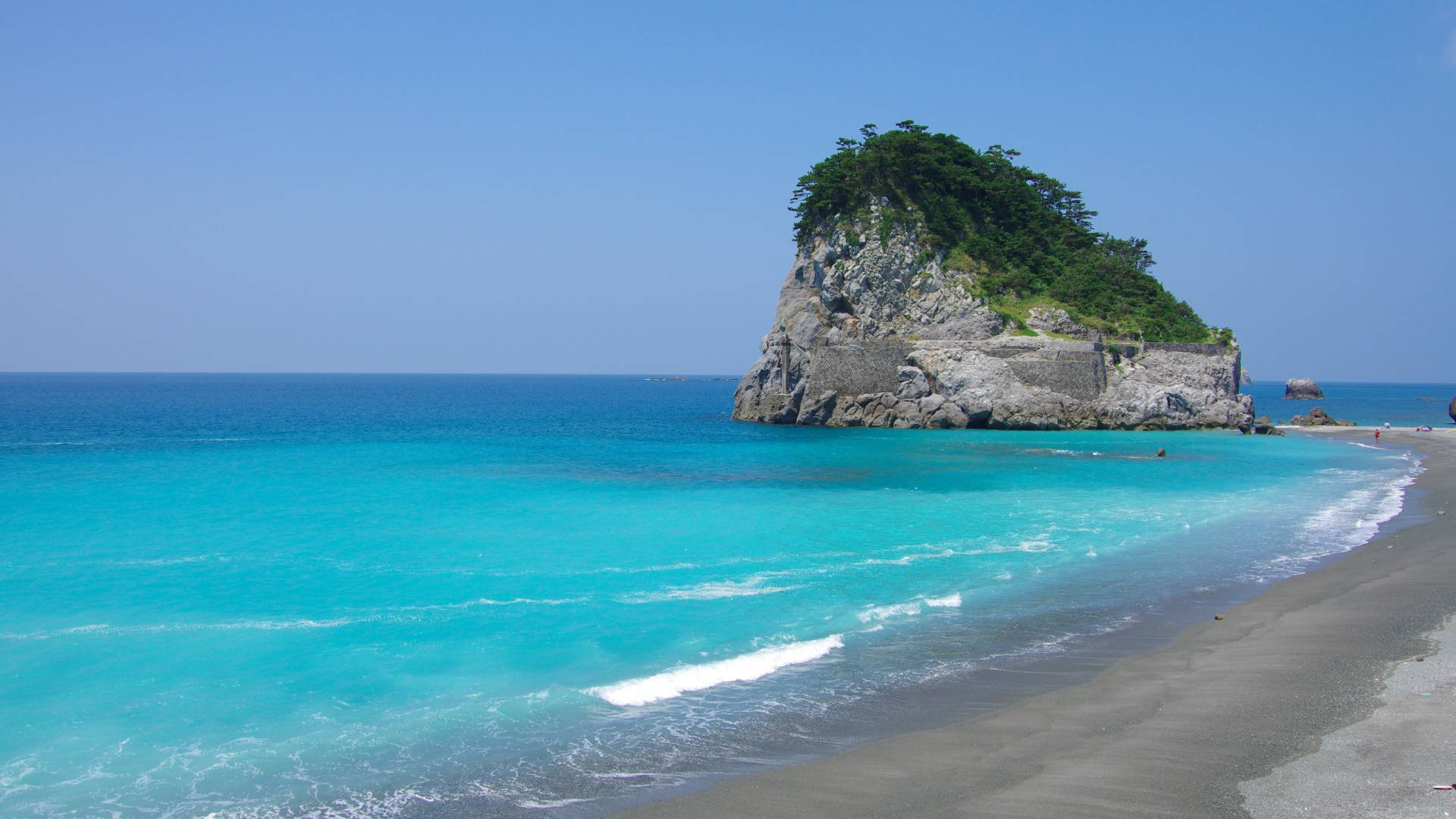
A high-speed jet ferry from Takeshiba Pier will bring you to Niijima in around three hours. You can camp for free beside Habushiura’s rolling barrels, soak in seaside hot springs, or even cycle to volcanic-glass art studios.
Island Holidays
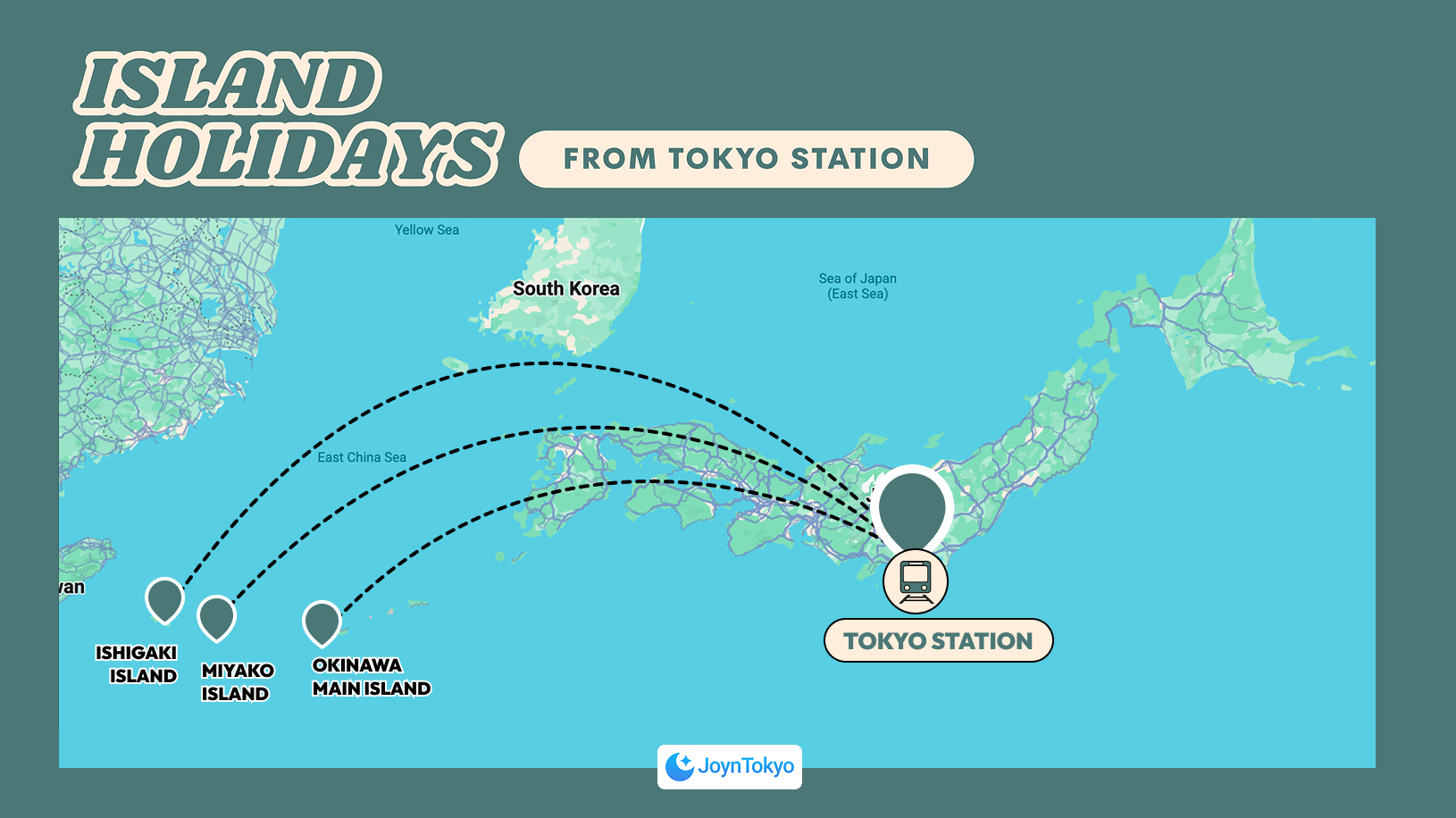
For true tropics — with no passport change required — head south.
Emerald Beach, Okinawa Main Island
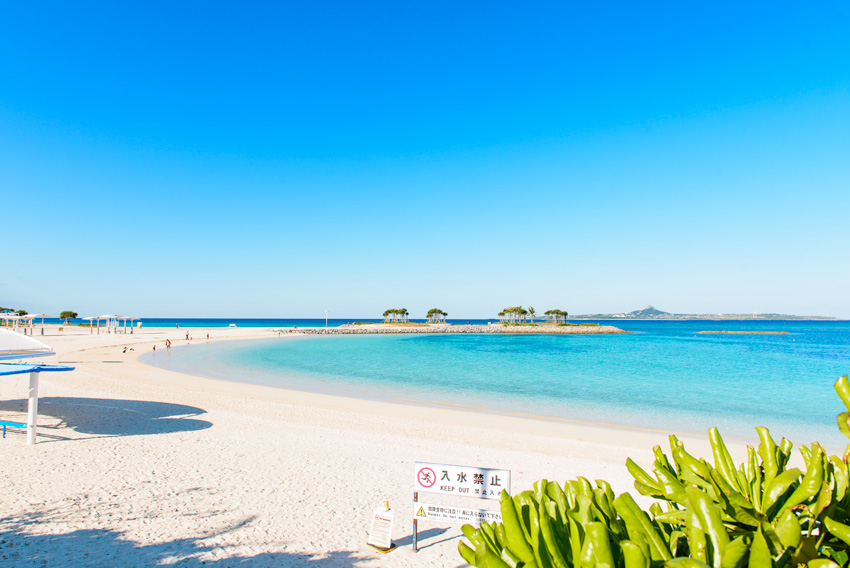
Inside Ocean Expo Park, coral sand fans out beside colour-coded swimming zones perfect for families. And what’s more, it only takes five minutes to get to the world-class Churaumi Aquarium.
Yonaha Maehama, Miyako Island
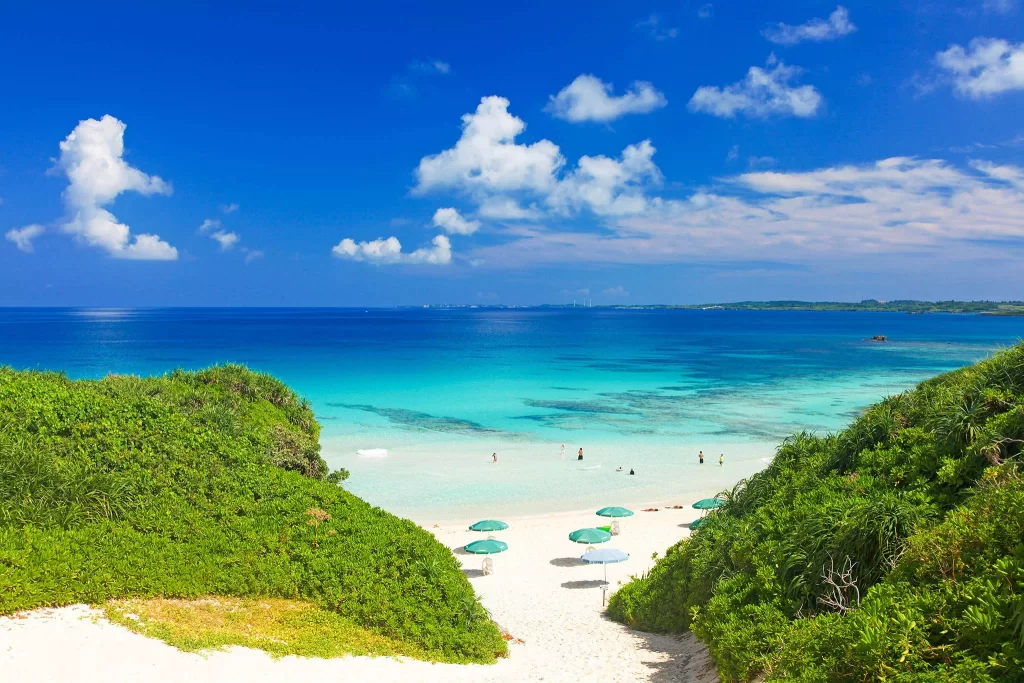
Seven kilometres of velvety sand merge with transparent shallows ideal for stand-up paddle boarding and kite-surfing. Rent a scooter and cruise across Kurima Bridge for panoramic café views.
Kabira Bay & Kondoi Beach, Ishigaki Island
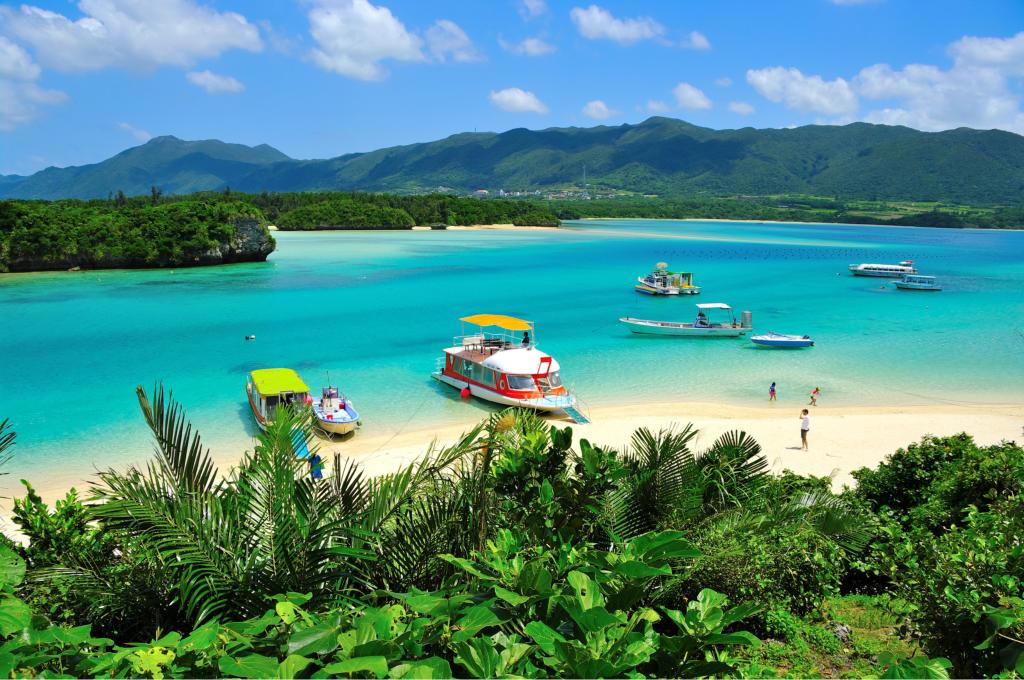
Emerald water, grazing cows and manta-ray dives craft a slower rhythm beloved by repeat visitors.
Practical Playbook
- Transport – The JR Yokosuka Line to Zushi costs merely¥940, and takes only 60 min highway bus to Oarai via Mito (¥2,000, 2hrs 15min); jet foil to Niijima (~¥12,000).
- Costs on the Sand – Umbrella-chair sets run about ¥2,000 per day in Kanto; Okinawa resorts may double the rate, but often include snorkel gear.
- Essentials – SPF 50+ sunscreen (imports cost more in Japan), quick-dry towel, and a pre-loaded IC card for seamless train-to-bus transfers. Many public beaches ban pavilion tents, so bring a pop-up sunshade instead.
Traveling off-season can feel almost private: a late-September morning at Zushi might see locals practising sunrise yoga, while lifeguard towers are already folded away. The trade-off is self-reliance: there are no rentals, fewer open showers and a stronger need to read the surf forecast. Download the Japan Meteorological Agency’s free Surf Information app before you go.
Finally, remember that beaches sit within communities. Pack away your speaker after 8pm, support the conbini or mom-and-pop eateries that sweep the promenade, and thank beach-house staff in simple Japanese. Courtesy keeps these shores foreigner-friendly and sustainable.
Key Take Away
Japan’s coastline is astonishingly diverse — and wonderfully close. From one-hour fixes at Zushi to long-weekend turquoise in Izu or Niijima, and finally the coral crescents of Okinawa, a world-class beach lies within every Tokyo resident’s reach. Check umi-biraki dates, respect local rules on litter and tattoos, and your summer will trade city heat for salt-spray bliss.

